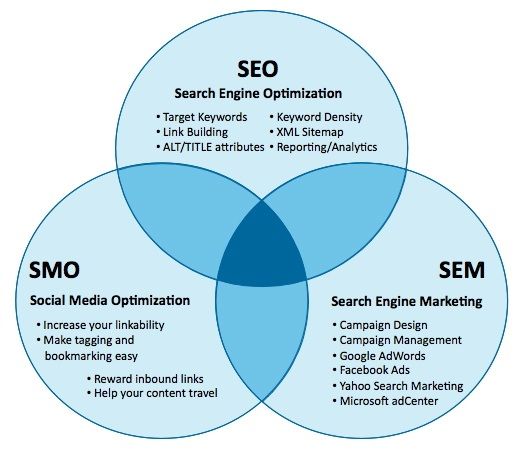Introduction
In today’s competitive digital landscape, through SEM we need to find effective ways to increase visibility and drive targeted traffic to their websites. This is where Search Engine Marketing (SEM) comes into play. SEM is a powerful strategy that combines paid advertising with search engine optimization to improve your search engine ranking and drive more qualified leads to your business.
In this blog, we’ll dive deep into the world of SEM, explaining how it works, why it’s important, and how you can use it to grow your business. Whether you’re new to digital marketing or looking to refine your strategy, this guide will help you master the art of SEM.
What is SEM (Search Engine Marketing)?
Search Engine Marketing (SEM) refers to the practice of using paid search advertising to increase visibility on search engine results pages (SERPs). Unlike SEO (Search Engine Optimization), which focuses on organic search results, SEM involves bidding on keywords and creating targeted ads that appear when users search for specific terms.
✅ Components of SEM:
- PPC (Pay-Per-Click) Advertising: You pay a fee each time someone clicks on your ad.
- Display Advertising: Banner ads that appear on websites and apps within the Google Display Network.
- Remarketing: Targeting users who have previously visited your website.
- Shopping Ads: Product-based ads that appear in search results.

👉 Learn more about the difference between SEO and SEM in our SEO Guide.
Why SEM is Important for Your Business
1. Instant Visibility
Unlike organic SEO, which can take months to show results, SEM gives your business immediate exposure on search engines like Google and Bing.
2. Targeted Traffic
SEM allows you to target users based on their location, device, search intent, and even demographics.
3. Measurable Results
With tools like Google Ads and Google Analytics, you can measure the performance of your SEM campaigns and adjust your strategy in real time.
4. Increased ROI
When executed correctly, SEM can deliver a high return on investment (ROI) by attracting qualified leads and converting them into customers.
👉 Want to know how SEM compares to other strategies? Check out this Google Ads Guide.
How SEM Works
1. Keyword Research and Selection
Successful SEM starts with selecting the right keywords. Use tools like:
- Google Keyword Planner – To find high-volume and low-competition keywords.
- Ahrefs – To analyze competitor keywords.
- SEMrush – To identify profitable keyword opportunities.
Example:
“If you’re a plumbing service in New York, targeting keywords like ‘emergency plumber NYC’ or ‘affordable plumbing services’ can attract highly qualified leads.”
2. Creating High-Converting Ads
Writing an effective ad involves:
✅ Headline: Include the target keyword and a compelling offer.
✅ Description: Highlight the benefits and unique selling points (USPs).
✅ CTA (Call to Action): Encourage users to take action (e.g., “Call Now” or “Get a Free Quote”).
Example:
“Need a reliable plumber in NYC? Call now for fast service and affordable rates!”
3. Landing Page Optimization
A well-designed landing page improves conversion rates. Ensure that your landing page:
- Matches the Ad Copy: Consistency builds trust.
- Has a Clear CTA: Make it easy for users to take the next step.
- Loads Quickly: Slow pages increase bounce rates.
- Is Mobile-Friendly: Over 60% of searches happen on mobile devices.
4. Bidding Strategy
Set your bids based on your campaign goals:
- Manual CPC: You control how much you pay per click.
- Enhanced CPC: Google adjusts your bid to maximize conversions.
- Target CPA: Google sets bids to help you achieve a target cost per acquisition.
- Maximize Conversions: Google sets bids to maximize the number of conversions.
5. Monitoring and Optimization
Use Google Analytics and Google Ads to track performance and make adjustments:
✅ CTR (Click-Through Rate): Higher CTR indicates effective ad copy.
✅ Quality Score: A higher score reduces your cost per click.
✅ Conversion Rate: Focus on improving landing page experience.
✅ Negative Keywords: Exclude irrelevant searches to improve ROI.
Best Platforms for SEM
Different platforms offer unique advantages for SEM:
| Platform | Best For | Why Use It |
| Google Ads | Search, Display, Shopping Ads | Largest search engine and ad network |
| Microsoft Advertising | Bing and Yahoo! | Lower competition and cost-per-click |
| Facebook Ads | Social Media Integration | Advanced audience targeting |
| B2B Marketing | Professional audience targeting | |
| YouTube | Video Advertising | High engagement and visibility |
How to Improve Your SEM Performance
✅ Use A/B Testing
Test different headlines, descriptions, and CTAs to find the most effective combinations.
✅ Optimize for Quality Score
Higher Quality Score reduces your cost per click and improves ad ranking.
✅ Leverage Remarketing
Target users who visited your site but didn’t convert.
✅ Focus on Local Targeting
If you’re a local business, target users within your service area.
Common SEM Mistakes to Avoid
❌ Ignoring Negative Keywords: Wastes ad spend on irrelevant traffic.
❌ Poor Landing Page Experience: High bounce rates increase costs.
❌ Unclear CTA: Without a clear call to action, users won’t convert.
❌ Targeting the Wrong Audience: Poor targeting reduces ad effectiveness.
Best Tools for SEM
Use these tools to maximize your SEM performance:
| Tool | Purpose | Link |
| Google Keyword Planner | Find high-performing keywords | Visit |
| SEMrush | Competitor analysis and keyword research | Visit |
| Ahrens | Backlink and keyword analysis | Visit |
| Google Analytics | Performance tracking and analysis | Visit |
Case Study: How SEM Increased Our Lead Generation by 300%
A local plumbing service implemented a targeted SEM campaign:
- Targeted Keywords: Focused on high-converting local terms.
- Optimized Ad Copy: Included benefits and a strong CTA.
- Landing Page Improvement: Reduced load time and added trust signals.
- Results:
✅ 300% Increase in website traffic
✅ 40% Lower Cost Per Click
✅ 150% Higher Conversion Rate
Conclusion
SEM (Search Engine Marketing) is one of the most powerful tools to increase visibility, drive traffic, and grow your business. By selecting the right keywords, optimizing your ads, and improving your landing pages, you can achieve impressive results.
Start using SEM strategies today to stay ahead of the competition and drive real business growth!
🔗 Want to learn more about SEM? Check out our SEM Guide for advanced strategies.
Meta Description:
Boost your website traffic with expert SEM (Search Engine Marketing) strategies! Learn how to create high-converting ads, target the right audience, and maximize ROI.
